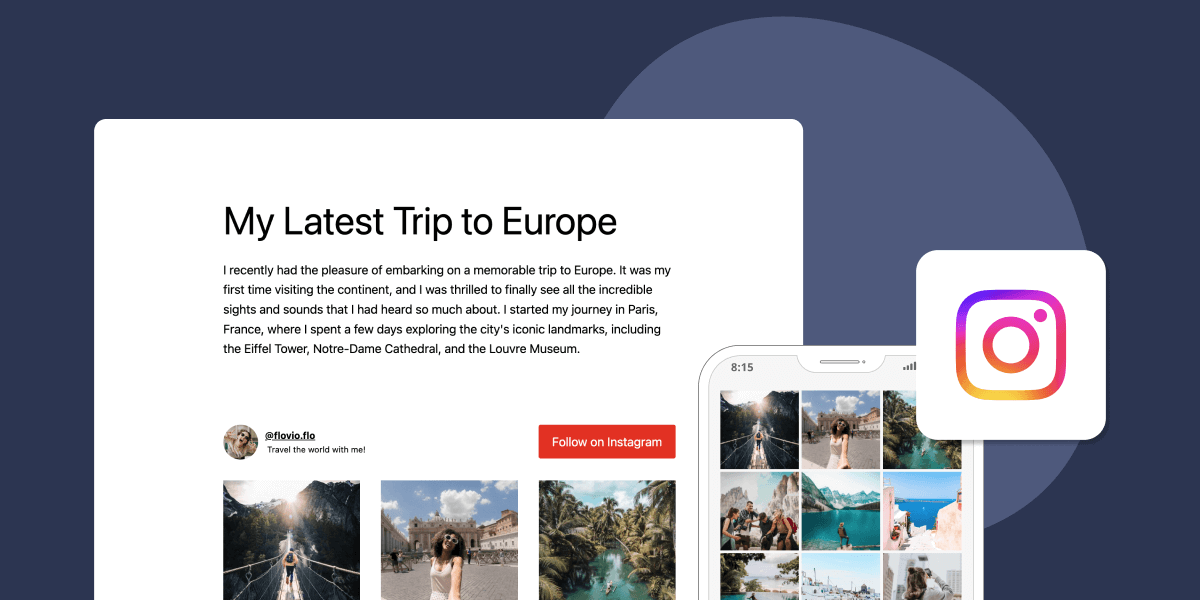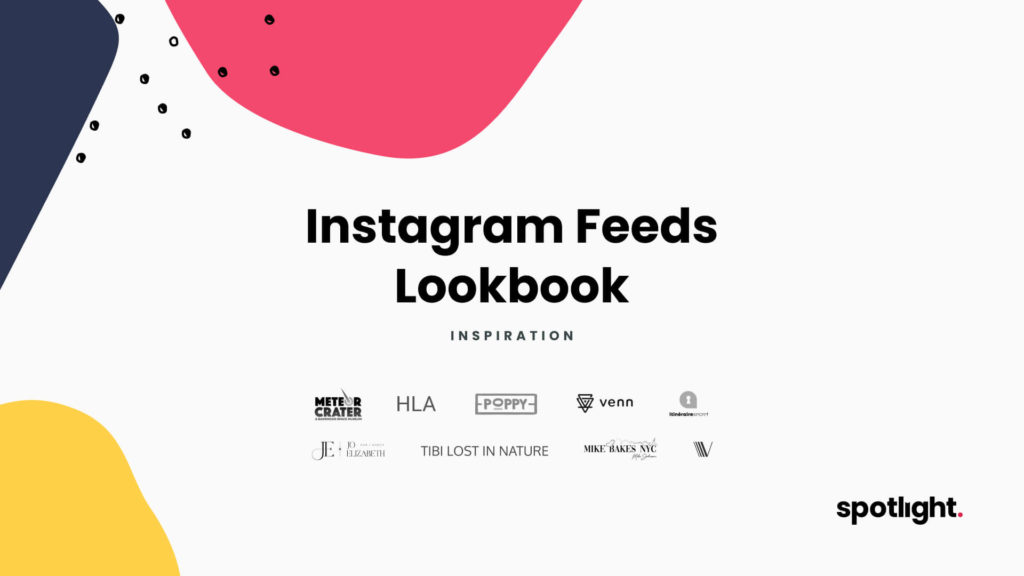Are you struggling to decide whether to focus on Instagram or blog to boost your digital presence? It’s a common dilemma, and we’re here to help you navigate the best choice for your unique needs.
In this article, we’ll compare these two powerful platforms, discuss their advantages and disadvantages, and provide practical tips for maximizing your online impact.
Choosing the right platform: Instagram vs Blog

When evaluating Instagram and a blog as potential platforms, it’s necessary to consider the advantages and disadvantages each one offers.
Instagram is a visual platform with a massive user base, making it relatively easy to gain followers and engage with your audience.
On the other hand, blogging offers a more in-depth and long-lasting content format that can help optimize your website for search engines and provides a budget-friendly digital marketing tactic.
To choose the right platform, you need to consider three main factors:
- Your target audience
- The type of content you want to create
- Your personal objectives
We will further analyze these factors in the sections below to help you make a balanced decision.
Identifying your target audience
Recognizing your target audience is key when deciding on the most suitable platform for your online presence. Different demographics are more likely to engage with various social media platforms.
For example, in general, blogs tend to attract internet users aged 40-60, while Instagram is more popular among younger generations.
It’s imperative to understand your audience’s preferences and generate content that appeals to them, whether it’s compelling Instagram posts or detailed blog articles discussing topics of their interest.
Determining content suitability
The type of content you want to create plays a significant role in deciding between Instagram and blogging. Instagram is perfect for quick, visual content, making it an ideal platform for lifestyle content and Instagram influencers.
Conversely, blogging allows you to provide more detailed information, making it a better choice for those who want to cover more complex subjects or offer in-depth analysis.
Examine the type of content you want to create and assess which platform suits your needs better.
Aligning with personal objectives
Finally, your personal objectives should be factored in when deciding between Instagram and blogging. If your goal is to build a personal brand, connect with like-minded people, or generate passive income through sponsored posts, Instagram might be the right platform for you.
On the other hand, if you’re a writer who wants to express yourself and establish credibility in your niche, blogging might be a better option.
Align your personal objectives with the platform that best supports your goals.
Crafting a strategy: Content creation and engagement

Irrespective of your chosen platform, devising a content strategy and actively engaging with your community remains paramount to success.
Consistently producing quality content that resonates with your audience is key to building a strong online presence. In addition, fostering community interaction and growth can help you establish a loyal following and increase engagement on both Instagram and blogs.
In the upcoming sections, we will discuss the importance of consistency in content planning and the role of community interaction and growth in crafting a successful content strategy for both platforms.
Content planning and consistency
Content planning and consistency are essential for achieving growth and keeping your audience engaged on both Instagram and blogs.
To maintain a consistent posting schedule and provide valuable content, consider using an editorial calendar and planning your content in advance.
Experts suggest posting on Instagram 2-3 times a week and blogging 2-4 times a week to keep your audience interested.
Monitoring your audience’s behavior and preferences, focusing on content quality, and adhering to a consistent schedule are of utmost importance.
Community interaction and growth
Active engagement with your community and nurturing its growth is key to succeeding on both Instagram and blogging platforms.
For Instagram, you can use features like polls, questions, and contests to encourage engagement and interaction. Respond to messages, have meaningful conversations with your followers, and showcase your brand values through personalized content.
For blogs, here are some strategies to encourage reader engagement:
- Encourage readers to leave comments on your blog posts
- Reply to comments and engage in conversations with your readers
- Build an email list to stay connected with your readers and send them updates
- Offer incentives for readers to engage, such as exclusive content or giveaways
By actively interacting with your community, you can build relationships and create a connection with your followers, which can lead to increased engagement and loyalty.
Technical considerations and skills
Blogging and Instagram demand different technical skills, with blogging being more technically demanding. While managing a blog involves aspects such as domain, hosting, and SEO optimization, Instagram is a more user-friendly platform and requires only a basic understanding of its features.
Next, we will cover the technical aspects of blogging and the skills required to use Instagram effectively.
Blogging technicalities
Blogging involves various technical aspects that require knowledge and skills, such as domain, hosting, and SEO optimization. To create a successful blog, you need to have a good handle on CSS, HTML, and basic HTML coding. Additionally, being familiar with blogging platforms like Medium, Gatsby, WordPress, Jekyll, Hugo, and Ghost can help you create and publish your blog online with ease.
Gaining proficiency in these technical aspects can pave the way for a successful blog article venture, and ultimately, a well-crafted blog post on your own blog with increased blog traffic.
Instagram savvy
For Instagram, you don’t need extensive technical skills. Having a basic understanding of the platform’s features and algorithms will suffice. Instagram offers various features such as sharing updates and content, tracking metrics, and interacting with followers through fun features like polls and questions.
By familiarizing yourself with Instagram’s features and staying updated on algorithm changes, you can optimize your content for maximum engagement and growth on your Instagram account and Instagram page vs Instagram competitors.
Monetization potential: Blog and Instagram

Blogs and Instagram provide differing monetization opportunities, with blogs offering a wider array of revenue sources.
Blogging can bring in money through ads, affiliate marketing, sponsored posts, and selling products. In contrast, Instagram earnings primarily come from sponsored posts and affiliate marketing, with a large following necessary for substantial income.
Blogging revenue streams
Blogging offers multiple income streams that can help you generate revenue. Some popular options include:
- Running ads from various platforms such as Adsense
- Earning through affiliate marketing
- Sponsored posts
- Selling products or services on your blog
Investigating various revenue streams can help you enhance your earnings potential and establish a sustainable blogging enterprise.
Instagram earnings
Instagram earnings primarily come from sponsored posts and affiliate marketing.
With a large following, you can expect to make between $2,000 and $7,000+ per sponsored post, depending on your follower count. Additionally, you can try Instagram affiliate marketing by partnering with brands and sharing affiliate links in your stories, post captions, and video descriptions.
Even though Instagram may not offer as many income opportunities as blogging, it can still prove to be a profitable platform for influencers and content creators with a large enough audience.
Longevity and algorithm influence
Blogs and Instagram differ in terms of content longevity and algorithm influence, with blogs providing more enduring content that stays relevant for a longer period.
On the other hand, Instagram’s constantly changing landscape and algorithm can make it challenging to maintain consistent growth and engagement.
Let’s discuss the longevity of blog content and the changing dynamics of Instagram.
Staying power of blog content
Blog content has a longer lifespan and can continue to generate traffic and revenue over time. Typically, blog posts last around 1.9 years or 700 days. Updating old blog posts can help:
- Improve SEO
- Drive more traffic
- Stay relevant
- Build authority
This staying power makes blogging a valuable investment for those looking to create long-lasting, impactful content, especially when considering how much effort goes into producing quality posts and writing long captions.
Instagram’s evolving landscape
Instagram’s constantly changing landscape and algorithm can make it challenging to maintain consistent growth and engagement on your Instagram post. The algorithm uses machine learning to rank content and deliver the most relevant posts to users, prioritizing posts that generate higher engagement, like:
- likes
- comments
- shares
- saves
Adapting to these algorithm changes is imperative for Instagram success in the social media advertising industry.
Strategies such as creating carousel posts, conducting intentional hashtag research, and crafting content that appeals to your target audience can help you tackle these challenges, especially when you post photos that resonate with your followers.
Balancing act: Utilizing both platforms

Using both platforms can enhance your digital presence and establish a complementary content strategy. Combining Instagram and blogging leverages the strengths of both platforms, allowing you to reach a larger audience and create a cohesive content strategy that resonates with your target audience.
Synergistic content strategies
Combining Instagram and blogging can create a cohesive content strategy that leverages the strengths of both platforms. By unifying and aligning the content created and shared on both platforms, you can amplify your message, engage your audience, and establish trust and expertise in your industry.
This strategy is designed to optimize your reach and impact, helping you get the most out of your digital presence.
Cross-promotion techniques
Cross-promoting content between Instagram and blogs can help drive traffic and increase engagement on both platforms. Here are some strategies to consider:
- Share your blog posts on Instagram Stories.
- Tease your blog content in your Instagram posts.
- Promote your brand on Instagram to drive traffic to your blog.
By implementing these strategies, you can effectively cross-promote your content and maximize your reach on both platforms.
Similarly, use your blog to showcase your Instagram content and encourage readers to follow your account for more updates. By implementing cross-promotion techniques, you can maximize the potential of both platforms and create a powerful digital presence.
The impact of authenticity
Authenticity significantly contributes to the success of Instagram and blog content, as audiences highly value genuine content and transparency.
In today’s world, where information overload is common, creating authentic content that resonates with your audience can help you stand out and build a loyal following.
The value of genuine content
Creating authentic content that resonates with your audience is essential for success on both Instagram and blogs. Here are some strategies to help you achieve that:
- Share personal stories that your audience can relate to.
- Showcase your brand values and what you stand for.
- Provide valuable information and insights that your audience can benefit from.
By following these strategies, you can boost engagement and establish a genuine connection with your followers.
By focusing on authenticity and delivering awesome content, you can set yourself apart from the competition and create a lasting impact on your audience.
Navigating sponsored posts and transparency
Navigating sponsored posts and maintaining transparency is crucial for maintaining trust and credibility with your audience on both platforms. Here are some tips to help you:
- Disclose any material connections you have with a brand you are endorsing, as required by the FTC guidelines and other similar laws.
- Be clear about the nature of the relationship, whether it’s affiliate marketing, sponsored content, or receiving free products.
- Use straightforward language to indicate that the content is an ad or sponsored.
By following these guidelines, you can ensure that your audience is aware of any sponsored content and maintain transparency in your blogging.
Maintaining transparency is central to preserving authenticity and credibility, which helps your audience make balanced decisions about the content they consume.
Making the choice
In conclusion, choosing between Instagram and blogging for your digital presence depends on your target audience, content type, and personal objectives.
Both platforms have their strengths and can be utilized effectively to maximize your online impact. By developing a content strategy, engaging with your community, mastering technical aspects, and focusing on authenticity, you can create a successful online presence on both Instagram and blogs.
Ultimately, the choice is yours, and both platforms can complement each other to help you achieve your goals and reach a wider audience.
Frequently asked questions
Is Instagram worth it for bloggers?
Instagram is definitely worth it for bloggers as it offers great potential for expanding reach and growing a following. With over 1 billion daily active users, it can be the best place to get your brand out there and connect with readers.
Which is better, social media or blogging?
Overall, it seems that blogging is better for having a targeted audience and being more focused on a specific topic, while social media provides a wider reach to a diverse audience. However, the ultimate choice depends on your goals.
Do blogs on Instagram make money?
Yes, blogs on Instagram can make money. Influencers and creators on Instagram can earn from sponsored posts and online products. There are several ways to monetize your content, such as collaborating with brands on sponsored posts and having 2,000 engaged readers can earn around $80-100 per post.
Which platform is better for reaching a younger audience?
Instagram is the way to go if you’re looking to reach a younger audience – it’s more popular among them than other social media platforms.
How often should I post on Instagram and my blog for maximum engagement?
For maximum engagement, aim to post on Instagram 2-3 times a week and blog 2-4 times a week.





One Response
Choosing between Instagram and a blog for your digital presence in 2024 depends on your goals. Consider whether you prefer quick, visual engagement or in-depth, searchable content.